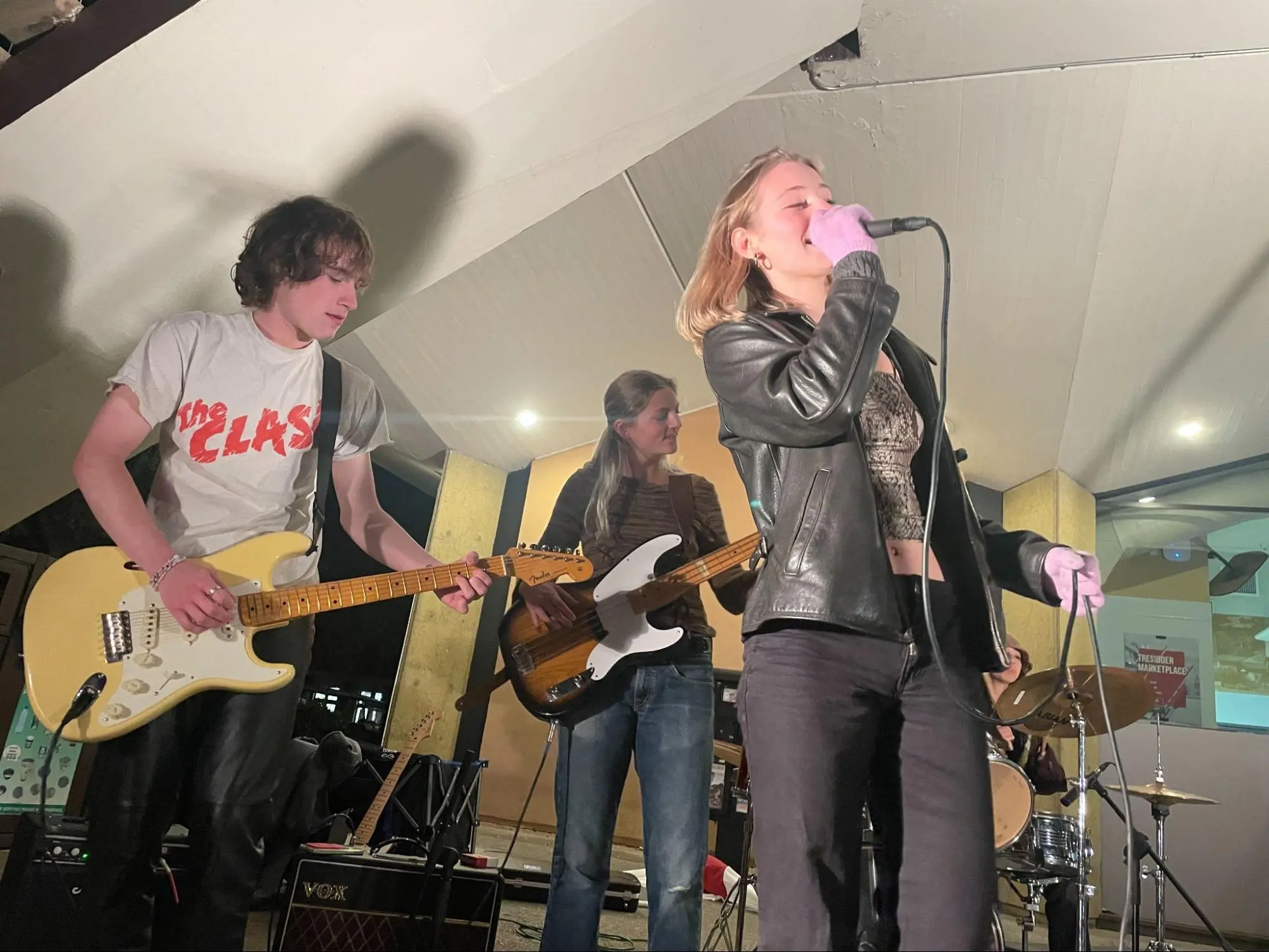When the members of The Move first played together at an New Student Orientation (NSO) jam session, they clicked immediately. The group’s artistic chemistry was nearly palpable — it was a stroke of luck that they found each other, members said.
Together, they are a group of seven: Quinn Simmons ’27, Ethan Htun ’27, Jonathan Martinez ’27, Haohan Wu ’27, Archish Arun ’26, Jackson McCormick ’27 and Ryota Sato ’27.
The members of The Move join a slate of campus bands and individual musicians who criticized Residential Education (ResEd) funding for Stanford’s artists as inaccessible.
In October, Stanford updated their Administrative Guide, amending a policy which allowed student musicians to be compensated by ResEd. Director of University Communications Pat Lopes Harris wrote in a statement to The Daily that Student Affairs is now unable to “use a financial aid stipend to compensate student performers.”
In lieu, they will provide student performers with an honorarium as an “expression of appreciation for individuals who contribute to special Stanford events.”
This shift in policy is an abrupt deviation from precedent, said Noah Bartelt ’24. Bartelt is a musician on campus who plays with the band General Consumption. According to Bartelt, bands have been paid through the ResEd department in the past.
“When you went to play a show at a row house, for example, there was a system set up where you’d be able to pay musicians from your house’s money,” Bartelt said.
When ResEd abruptly altered their policy, they stated that lawyers had found an issue with the pre-existing system, and that that channel of compensation would be closed immediately.
Since many student musicians receive compensation from house funds, policy change could complicate future compensation opportunities. In the wake of ResEd’s policy change, there are only two primary opportunities for compensation: the Stanford Concert Network (SCN) and The Arbor.
The impact of compensation is multifaceted, Arun said.
“We plan on expanding our repertoire, expanding our gear, so we can continue to improve our sound and develop as musicians,” Arun said. “That in conjunction with rehearsal time, and maintenance of instruments –– and all those little things –– add up over time.”
There exists an industry standard rate off campus. For musicians who have been involved with external ensembles, they recognize compensation as a gesture of respect, Arun said.
Bartlet shared a similar perspective, arguing that the degree of work that goes into putting together a band is not something that can be done in a couple hours before a show. With General Consumption, Bartlet said it took several months to get up and running, learn an hour-long setlist and curate a high quality performance.
On top of maintenance and gear costs, bands often have paid graphic designs and producers in charge of audio mixing. The expenses add up quickly, and compensation makes it all possible.
According to independent musician Nathan Sariowan ’24, musicians “want to be treated like we are independent contractors, like we are freelancers getting an hourly job.”
This dialogue has reached its climax amid a critical inflection point in the campus music landscape. Stanford’s music scene has reached a state of notable vibrancy, Bartlet said.
“The student body is getting more excited about live music. And, unfortunately, the administration’s decision really puts a damper on the live music scene,” he said.
But student musicians told The Daily they are facing the future with hope and persistence, excited to create a new era in Stanford’s music ecosystem and continue to energize the student body around its homegrown artists.
“It’s so important to be having this conversation now,” Sariowan said. “We’re worthwhile vendors and creators just like any other person who runs a business here on campus. For me, I think we’re talking about the legitimacy of music and bands here.”
